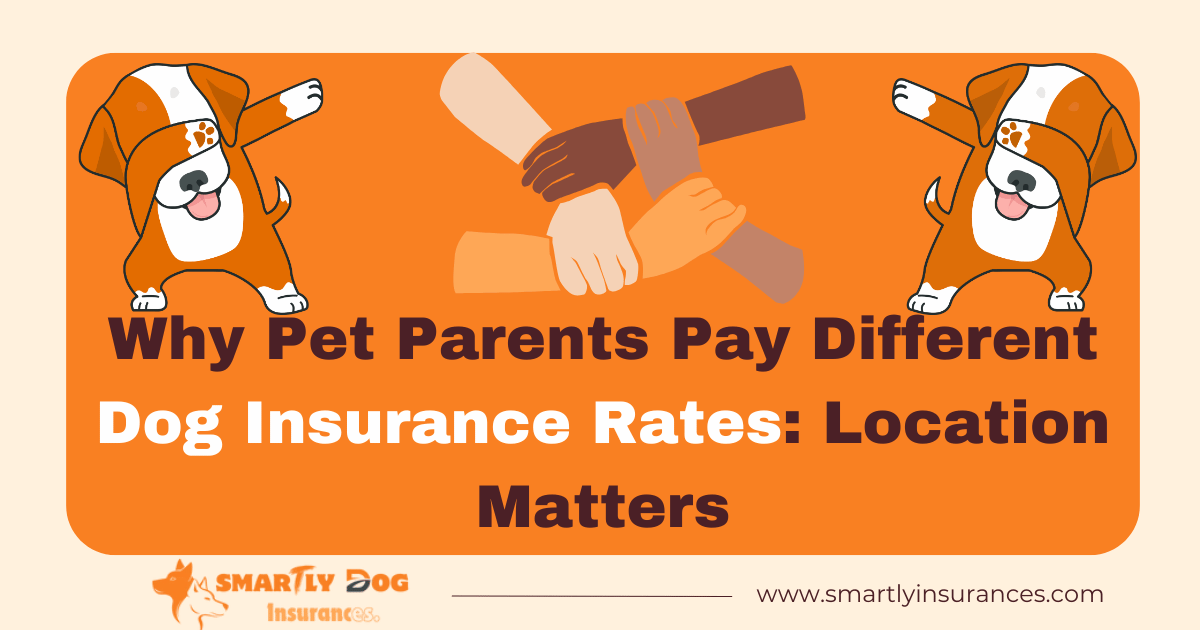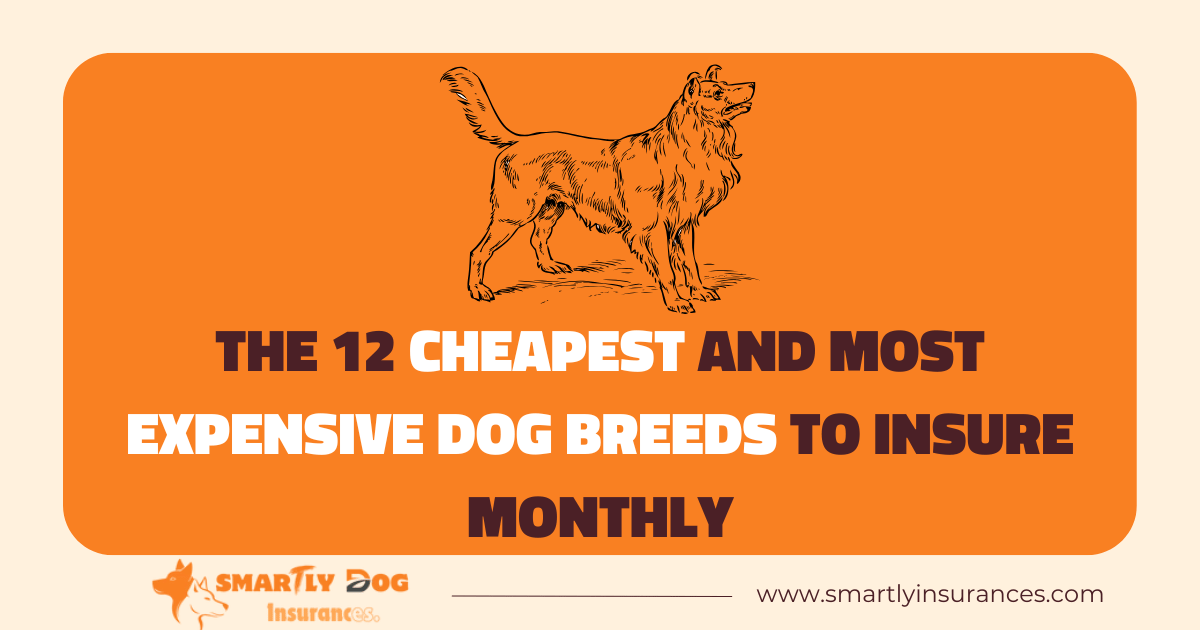Pet insurance data reveals an interesting trend: dog insurance costs have jumped more than 5% since last year, yet cat insurance prices fell. Top providers’ dog insurance rates show remarkable differences. Dog owners pay approximately $676 each year for pet insurance. Monthly premiums vary between $27 and $72, based on the provider.
Pet owners can choose from various options. Pumpkin’s detailed coverage costs $62 per month, while Lemonade offers a budget-friendly plan at $27 monthly. These choices matter significantly. Dogs represent more than 78% of insured pets, and insurance companies provide different coverage options at various price points. Our analysis of leading insurance providers will help you understand these choices and spot potential hidden costs that might affect your budget.
The True Cost of Dog Insurance Plans
Dog insurance costs show big differences among providers. Pet owners pay an average monthly premium of $53.33 for accident and illness coverage. These prices range from $10 to $53 based on the type of coverage you choose.
Monthly Premium vs Total Expenses
Dog insurance costs go well beyond your monthly payments. You’ll pay about $640 per year for a typical accident and illness plan. Your final cost depends on several key factors:
- Deductible amount (ranging from $100 to $1,000)
- Reimbursement level (70% to 90% of costs)
- Annual coverage limits
- Pet’s breed and age
- Geographic location
Hidden Fees and Service Charges
Pet owners should watch out for costs beyond standard premiums. On top of that, some companies charge setup fees when you register. You might also face administrative fees, processing charges, and costs to modify your policy.
Annual Premium Increases Explained
Premium increases happen often, especially when you have aging pets. A Labrador Retriever’s monthly costs typically change this way:
- 8 weeks: $57 per month
- 1 year: $66 per month
- 5 years: $89 per month
- 10 years: $160 per month
Veterinary cost inflation plays a major role. Veterinary services saw an 8.4% increase between August 2022 and August 2023. This is a big deal as it means that some insurance companies asked for rate increases over 20% in 2023.
Your location affects premium adjustments too. People in urban areas usually pay more due to higher vet costs. Each breed’s health history impacts long-term expenses, and breeds with conditions like hip dysplasia often come with higher premiums.
Understanding Coverage Gaps
Understanding coverage gaps helps you avoid unexpected out-of-pocket expenses while comparing dog insurance plans. Insurance providers will get into your pet’s medical history to determine coverage eligibility.
Common Exclusions Most People Miss
Pet owners often get surprised by several significant exclusions. Bilateral conditions create a major coverage gap – your dog’s future conditions on the opposite side typically won’t be covered if one side is affected. Breed-specific exclusions affect certain dogs that tend to develop particular health issues. German Shepherds and Golden Retrievers often face limits on degenerative myelopathy coverage.
Notable exclusions include:
- Experimental or investigational treatments
- Behavioral training unless medically necessary
- Alternative therapies not prescribed by veterinarians
- Breeding-related expenses and complications
- Cosmetic procedures and elective surgeries
Pre-existing Condition Loopholes
Insurance providers make a clear distinction between curable and incurable pre-existing conditions. Some companies cover curable conditions after a symptom-free period. To cite an instance, future expenses might qualify for coverage if your pet recovers from an upper respiratory infection and stays treatment-free for 180 days.
All the same, chronic conditions like arthritis, diabetes, or heart problems usually face permanent exclusion. The timing is vital – you’ll maximize coverage potential by enrolling your pet before any health issues develop.
Medical history reviews determine coverage options. Insurance companies need veterinary records to identify pre-existing conditions. Conditions that show symptoms before policy activation or during waiting periods won’t be covered, whatever the formal diagnosis timing.
Compare Dog Insurance Plans: Key Cost Factors
Your monthly payments for dog insurance depend on three significant cost factors. These elements shape both your immediate expenses and long-term financial commitments.
Deductible Impact on Monthly Payments
Your premium costs change based on the deductible amount you choose. A higher deductible guides you toward lower monthly payments. To cite an instance, your monthly premiums could drop by about $35 if you choose a $1,000 deductible instead of a $200 deductible. Here’s a breakdown of how deductible choices affect costs:
| Deductible Amount | Monthly Premium Impact |
|---|---|
| $250 | $60 premium |
| $500 | $40 premium |
| $1,000 | $25 premium |
Reimbursement Rates and Your Wallet
You’ll find insurance providers offering reimbursement rates from 60% to 100% of covered veterinary expenses. The most common plans come with reimbursement levels between 80% to 90%. Your monthly premiums rise with higher reimbursement rates, but you’ll pay less out-of-pocket when filing claims.
Let’s look at a real example: A $1,000 vet bill with an 80% reimbursement rate means the insurance company pays $800 after your deductible. You should receive your reimbursement check within 5-7 days after submitting your claim.
Annual Coverage Limits: What They Mean
Annual coverage limits set the maximum amount your insurer pays during a 12-month policy period. These limits typically range from $2,500 to unlimited coverage. In fact, standard options often include $5,000, $10,000, and $15,000 annual limits.
Here’s a practical example: A $10,000 annual limit means you’d need to cover any costs beyond that amount. If your pet’s eligible expenses reach $11,000 in a year, you would pay the extra $1,000. Finding the right balance between premium costs and coverage limits becomes vital since higher limits mean higher premiums.
Real Cost Scenarios Revealed
Pet owners often face unexpected emergency veterinary expenses. What looks like a simple procedure at first can quickly turn into a costly affair.
Emergency Surgery Costs Compared
Emergency veterinary surgeries usually cost between $2,000 to $5,000. A simple emergency visit starts at $250, but this is a big deal as it means that costs can reach $10,000 based on how complex the treatment is. Here’s a breakdown of common emergency procedures:
| Procedure | Cost Range |
|---|---|
| Foreign Object Removal | $2,964 – $5,000 |
| Emergency Hospitalization | $600 – $3,500 |
| Trauma Surgery | $3,717 – $8,294 |
| Gastric Dilation Surgery | $3,525 |
Location plays a big role in these costs. Urban areas charge more for emergency services because their operating costs are higher.
Chronic Condition Treatment Expenses
Long-term health conditions call for serious financial planning. Pet insurance can help manage these ongoing expenses. Let’s look at these ground treatment costs:
A pet’s diabetes management, with medications and regular blood work, costs about $10,496 over time. Hip dysplasia treatment combines surgery and long-term medications, reaching approximately $7,815. Cancer treatment through chemotherapy costs $5,351.
Long-term diseases need constant monitoring and medication. Pets with epilepsy need anti-seizure medication for life. Skin allergies affect 30% of insured dogs and can cost thousands each year for special diets, testing, and allergy shots. Kidney failure makes up 25% of cat insurance claims, while hyperthyroidism accounts for 20%, showing how common these chronic conditions are.
Hidden Charges by Provider
Pet insurance providers charge many more fees besides simple premiums that can surprise owners. Different providers have substantial variations in these extra costs.
Administrative and Processing Fees
The direct claim processing costs £10 to £25 per claim. Vet practices usually charge £15 to £40 to handle insurance paperwork. The growing number of insured pets has created these costs because staff needs dedicated time for claims processing.
Your insurance won’t cover these administrative fees. Pet owners must pay these charges on their own, even with complete insurance plans. The owner remains responsible for veterinary taxes and administrative charges.
Policy Change Costs
Your monthly premiums change in several ways when you modify coverage options:
- Increasing deductibles reduces monthly payments
- Lowering annual maximums decreases premiums
- Adjusting reimbursement percentages alters costs
You can lower premiums by removing exam fee coverage or prescription benefits. These coverages usually can’t be added back once removed. Many providers treat upgrades as new policies, which restricts policy upgrades.
Cancellation Penalties
You can cancel your policy anytime with most providers. The cancellation terms vary substantially:
| Timeframe | Refund Policy |
|---|---|
| First 15-30 days | Full refund (if no claims) |
| After initial period | Pro-rated refund possible |
| Annual premium paid | May not be fully refundable |
Cancellation has long-lasting effects. Any treated conditions during the policy period become pre-existing conditions for future coverage. Senior pets face special challenges because finding new coverage after cancellation becomes harder. Your other pets’ premiums might increase if you cancel one pet’s policy with the same provider.
Long-term Cost Analysis
Dog insurance costs show striking differences among providers. The average monthly cost to insure a dog is $56. This amount varies from $31 lower to $50 higher than the average.
5-Year Cost Projection by Provider
Pet insurance costs add up over time. A complete analysis reveals premium costs ranging from $6,500 to $23,500 over 13 years for a mixed-breed dog. Purebred dogs cost even more, with some breeds paying premiums up to 40% more than mixed breeds.
Here’s a real-life cost projection for a Labrador retriever in Chicago:
| Age | Annual Cost |
|---|---|
| Year 1 | $674.08 |
| Year 5 | $1,247.16 |
| Year 10 | $2,365.44 |
Age-Related Premium Increases
Pet age drives premium adjustments. A medium mixed-breed dog in Los Angeles sees these monthly premium changes:
- Age 2: $53 per month
- Age 10: $135 per month
Premium increases vary by provider. Dogs aging through year 12 face rate increases between 155% to 1,162%. Some companies like Trupanion keep premiums steady based on enrollment age instead of current age.
Veterinary costs rose by 8.4% between 2022 and 2023. At least two major providers have asked for premium increases above 20% in 2023. These changes combine with age-related increases to affect long-term costs.
Monthly premiums for a mixed-breed dog progress as follows:
- 8 weeks: $70.99
- 10 years: $114.10
- 12 years: $156.59
The total lifetime insurance cost depends on when you enroll your pet. Early coverage means lower starting premiums, though costs increase with age.
Comparison
| Feature | Simple Plan | Mid-Range Plan | Premium Plan |
|---|---|---|---|
| Monthly Premium Range | $27 | $53.33 (Average) | $72 |
| Typical Deductible | $250 ($60 premium) | $500 ($40 premium) | $1,000 ($25 premium) |
| Reimbursement Rate | 70% | 80-90% | 90% |
| Premium at 8 weeks | $57 | $70.99 | Not mentioned |
| Premium at 1 year | $66 | Not mentioned | Not mentioned |
| Premium at 5 years | $89 | Not mentioned | Not mentioned |
| Premium at 10 years | $160 | $114.10 | Not mentioned |
| Annual Coverage Limit | $2,500 | $5,000-$10,000 | Unlimited |
| Emergency Surgery Coverage | $2,000-$5,000 | $2,000-$5,000 | $2,000-$5,000 |
| Claim Processing Fee | £10-£25 | £10-£25 | £10-£25 |
| Administrative Fee | £15-£40 | £15-£40 | £15-£40 |
| Cancellation Policy | Money-back guarantee within 15-30 days without claims | Money-back guarantee within 15-30 days without claims | Money-back guarantee within 15-30 days without claims |
Pet owners face tough choices about dog insurance costs. Monthly premiums vary widely between providers, ranging from $27 to $72 monthly, showing major differences in coverage and benefits. The simple premium payments often come with hidden fees. Administrative charges and processing costs can add up quickly.
Your dog’s age plays a vital role in premium costs. Some providers raise their rates dramatically – up to 1,162% by year 12. Emergency surgeries can cost anywhere from $2,000 to $5,000, which shows why complete coverage matters so much. Chronic conditions paint an even clearer picture. Diabetes treatment costs around $10,496, while hip dysplasia runs about $7,815. These numbers show the long-term effect on your wallet.
Pet owners should watch out for coverage gaps and exclusions. Pre-existing conditions, bilateral issues, and breed-specific limits might lead to unexpected costs. Early enrollment helps secure lower original premiums, even though age-related increases will happen over time.
The right dog insurance plan comes down to balancing monthly costs against possible medical bills. Complete plans offer broader coverage and higher reimbursement rates. Simple plans might work better for healthy pets with lower risk factors. Success lies in understanding your dog’s needs and finding coverage that lines up with your current budget and future healthcare needs.



